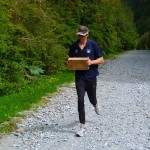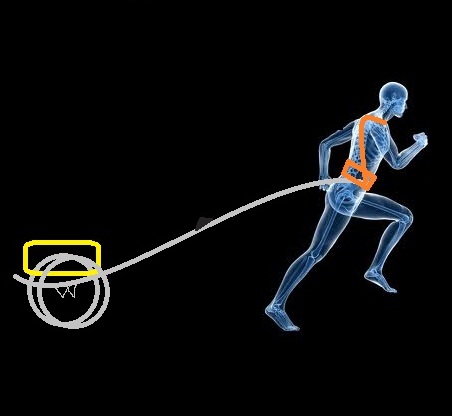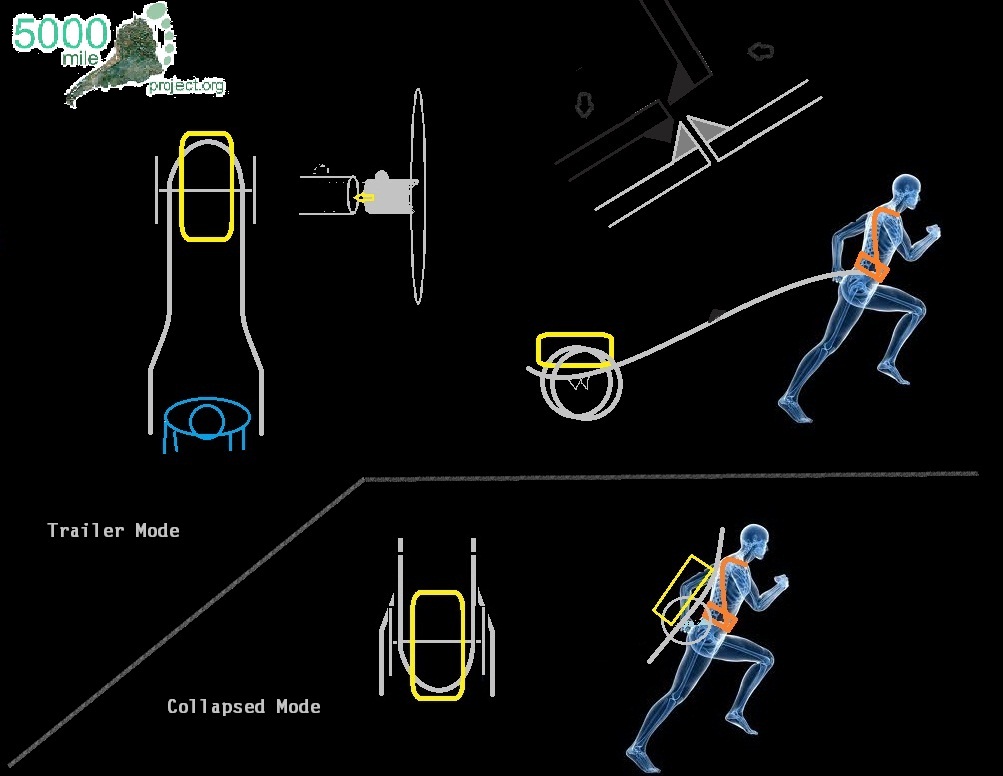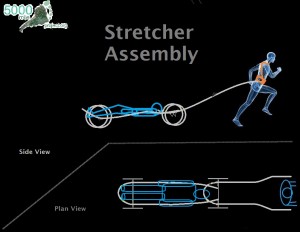We have declared up front that the expedition is unsupported – but what does that mean in practice for life day-to-day on the 5000mileproject? With no sherpa, no support car, no horse and trap, no battlebus or winnibego to carry all our gear how do we propose to move from a to b, then c to d, day on day for a year? “Surely not up there on your backs” our terrified knees, hips and feet scream – “we promise to be springy and light but give us a chance!!” they plead?? Don’t worry we assure them, we are not masochistic army types we deceive them (but in reality whatever the solution it must be collapsable and packable for some otherwise unpassable sections…)
Surprise, surpise, as is so often the case the answer is not so much a revolution but an evolution, though in this case it’s an evolution with a revolution or two. The wheel! The mighty wheel which has seen many a civilisation come and go and yet is still to be beaten for efficiency, effectiveneess and efficacy in moving man and chattels. It takes the pain, we take the glory, we hope….
So for a running expedition what form will our wheel take? To Push or to Pull is the question…..
Push, like Dean Karnazes did after his 50-in-50, or pull, like Rosie Swale Pope?
We did a little experiment by carrying a block with arms outstretched to mimic the sensation of at least using them with some weight, similar to pushing a pram. At first, with “eye of the tiger” pulsing through our brains we clomped off into the distance  in a Rocky-esque blaze of enthusiasm. Signs of trouble soon appeared though, and 10 minutes later the burn was becoming unbearable. Nothing parents around the world don’t know mind you, the “locked arm” for kid-carrying (especially when they are big enough to walk!), and the intense shooting pain as the limb needs to be manually extracted to release the cargo! Push and your arms are engaged, and not doing their job in propelling the body forwards.
in a Rocky-esque blaze of enthusiasm. Signs of trouble soon appeared though, and 10 minutes later the burn was becoming unbearable. Nothing parents around the world don’t know mind you, the “locked arm” for kid-carrying (especially when they are big enough to walk!), and the intense shooting pain as the limb needs to be manually extracted to release the cargo! Push and your arms are engaged, and not doing their job in propelling the body forwards.
So we are looking into pulling instead – what could this crazy global market provide in that respect? Nothing. The internet never doesn’t provide anything, but yes, there seems to be no market for running trailers – curious? It provides for walking trailers, biking trailers and even skiing trailers but not running trailers, especially ones that convert into backpacks.
Does that mean there is no demand, and therefore no supply, all for good reason? Not sure yet – we’ll see. What we are looking towards is a design that will meet the following criteria, nothing less (and can be built with sombody blessed with more energy than skill – me!)
- – Ultralight – less than 7kg
- – Convertible – capable of being converted into a backpack
- – Zero downward load on the runner – the axle must take the load
- – Ultrastrong – capable of being combined with another trailer to take a person if necessary
- – Efficient – minimal drag on many different substrates
And this is what we came up with…
Please do give thoughts on our initial design? <CLICK HERE>



Just found some 12″ wheels and a man who can weld aluminium so the prototype of this will soon become a reality!
Hi Dave, hello Kath!!
I was looking at the designs for your “tráiler” and comparing it with other types and different experiences in such kind of expeditions. Just an idea but I think that it might be better to have a trailer that works more as a traditional “rickshaw” like the ones that they use in India or China. The disadvantage is that your hands will be busy but you may have a control in the balance of your luggage. If it´s two wheeled and is attached to your body (hips) it will bounce at every step. Also when you go downhill the weight will increase in your hips with the consequences on your knees, and the opposite to that is that when you go uphill it will pull you up loosing traction. The rickshaw balance is controlled by subtle movements (up=less weight, down=more weight) that may help you a lot, like using the lift of it and it´s “momentum” to increase your speed without having too much weight in your knees.
Best regards!!
Tayo
Thanks Tayo – it’s a thought – I tried engaging my arms on the run today based on your comments and its really uncomfortable. You also brings up an important suggestion though – about downhill running, the need to let something other that our knees do the braking. Might see if we can introduce a disk brake on one side? run the cable to a clip brake handle on the chest strap of the rucksack? I’ll see how that is.
The bouce is something we are trying to minimise through learning to run again – bit late you may say!! We are retraining to put in a higher number of steps (cadence) /min (180bpm) to iron out the amount of up and down movement in our stride and also reduce the farring impact of each step.
Made a prototype out of 5/8″ steel tube today – wheels arrive tomorrow. Then we need to run with it under load to do so real learning!!!
Tayo, just another thought – I could perhaps have a detachable extension which allows the trailer to quickly be turned into “Rickshaw” mode? certainly much more relevant once we have crossed into the Andes and all Chiles wonderful hills!!!
Pingback:Bamboo and Bike Tyres | 5000 Mile Project